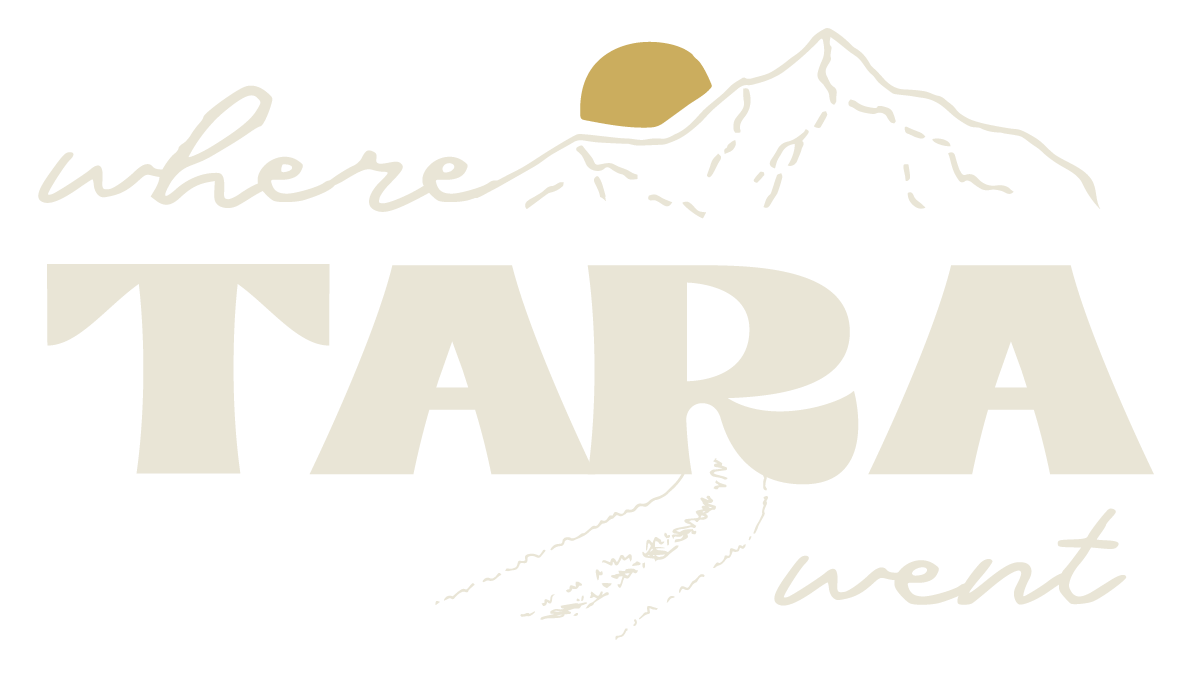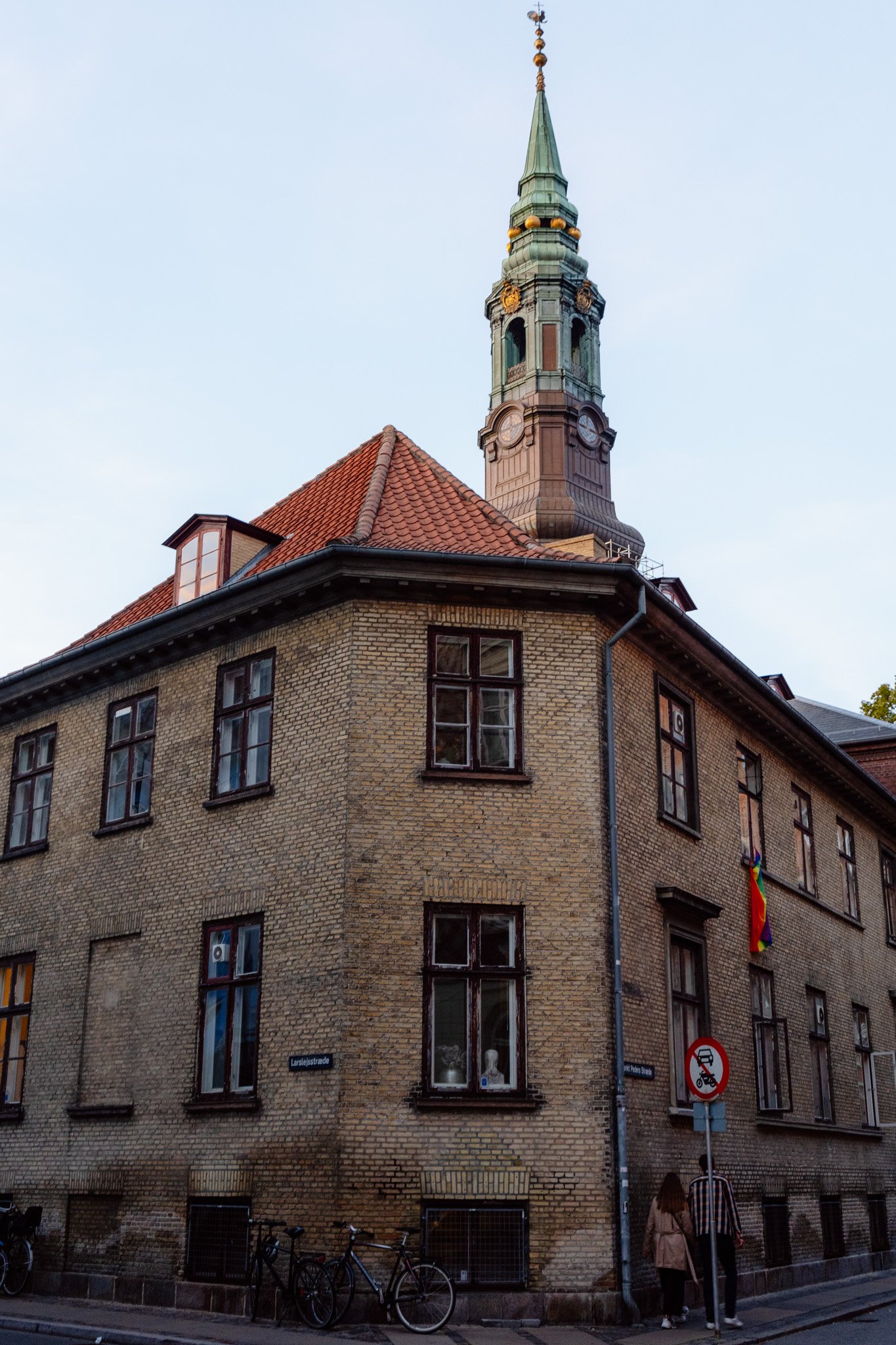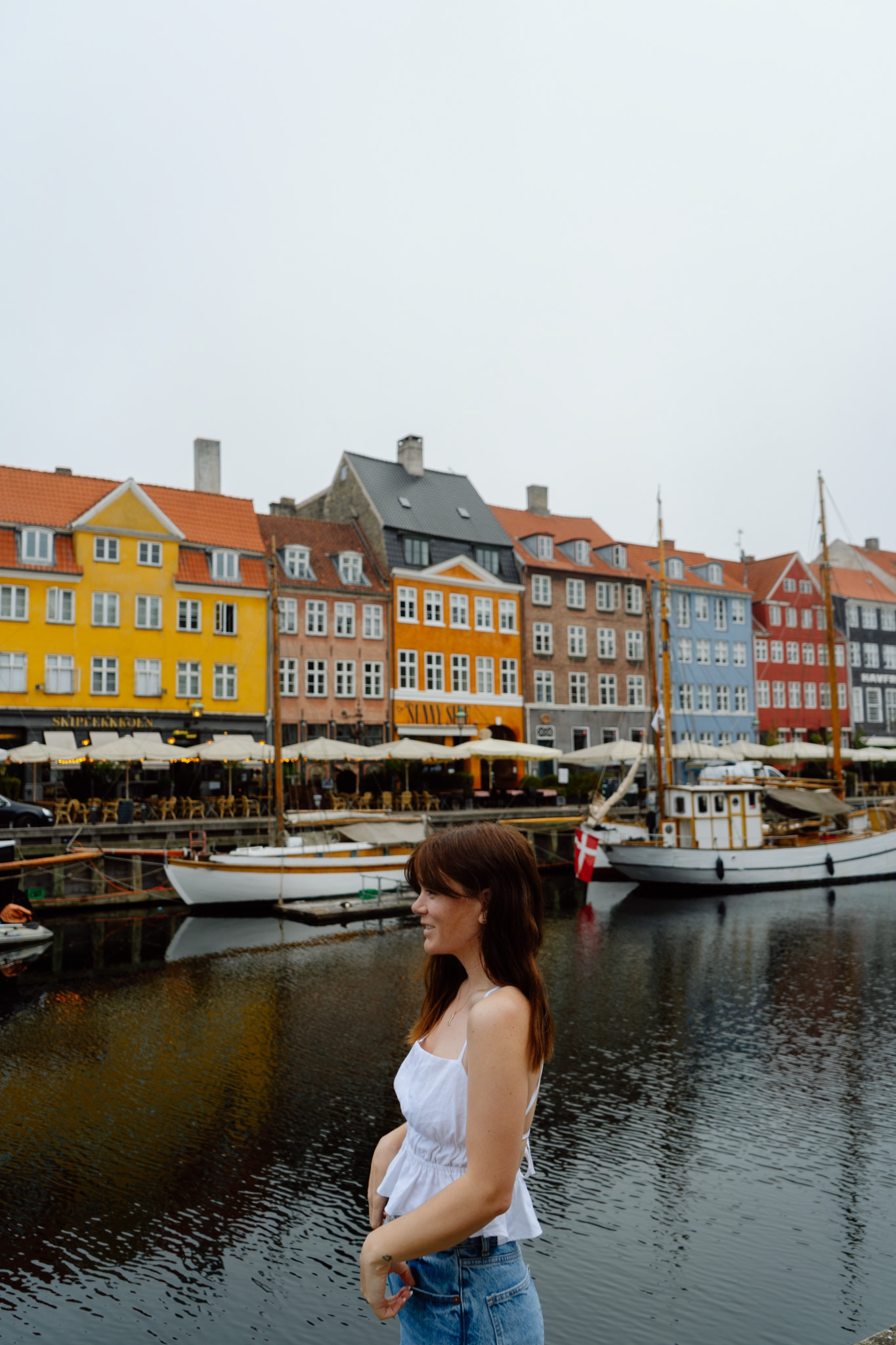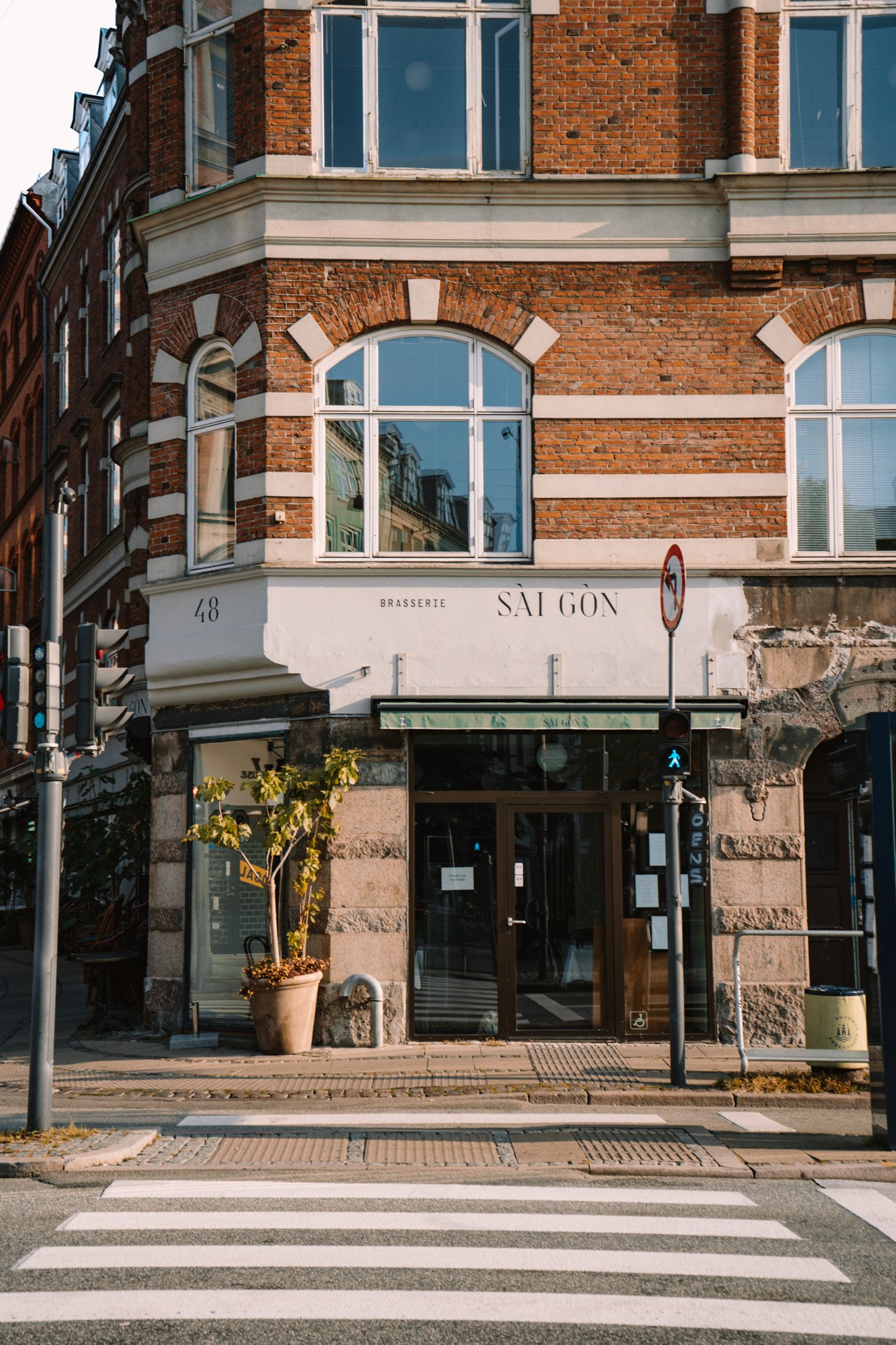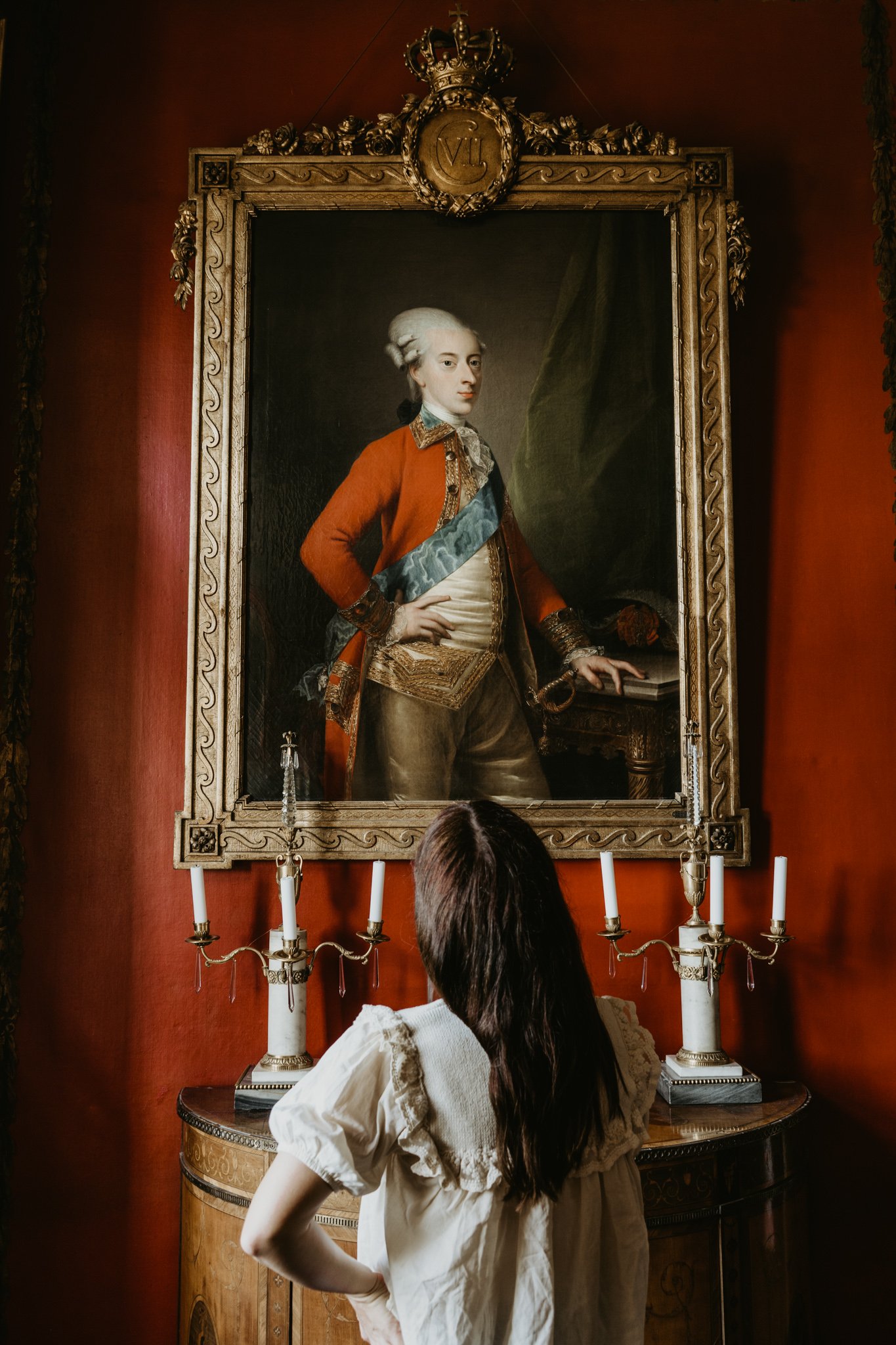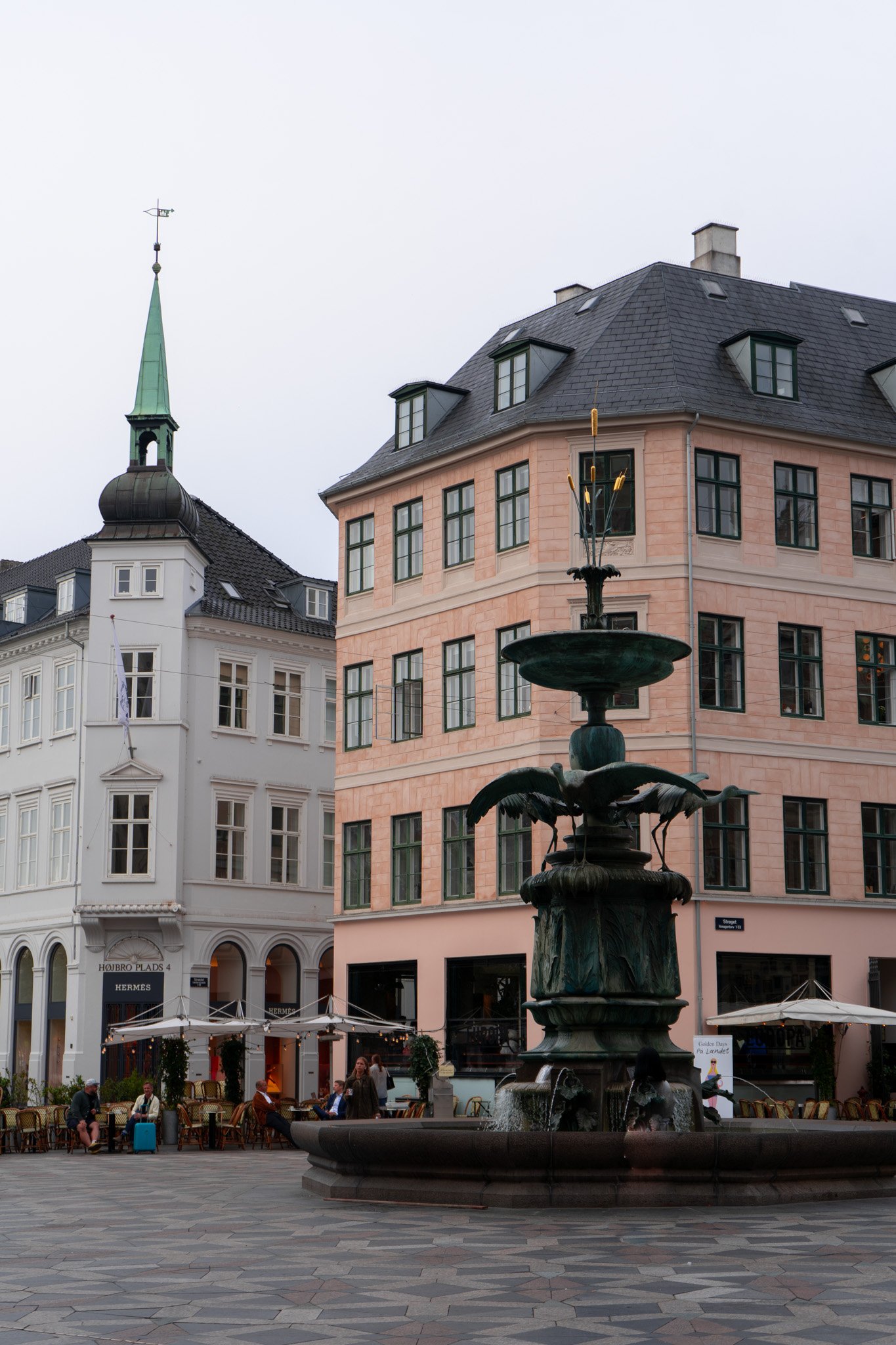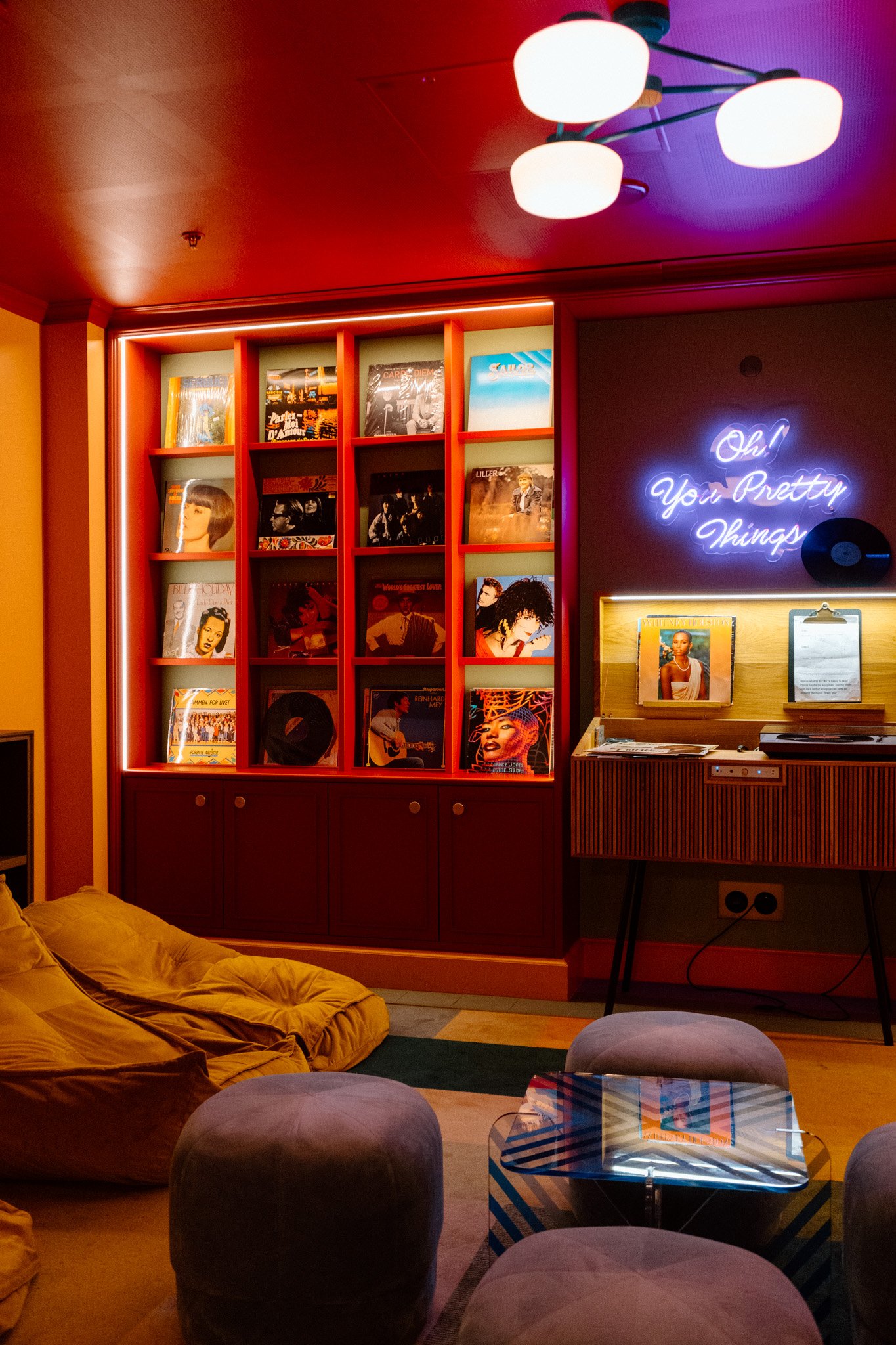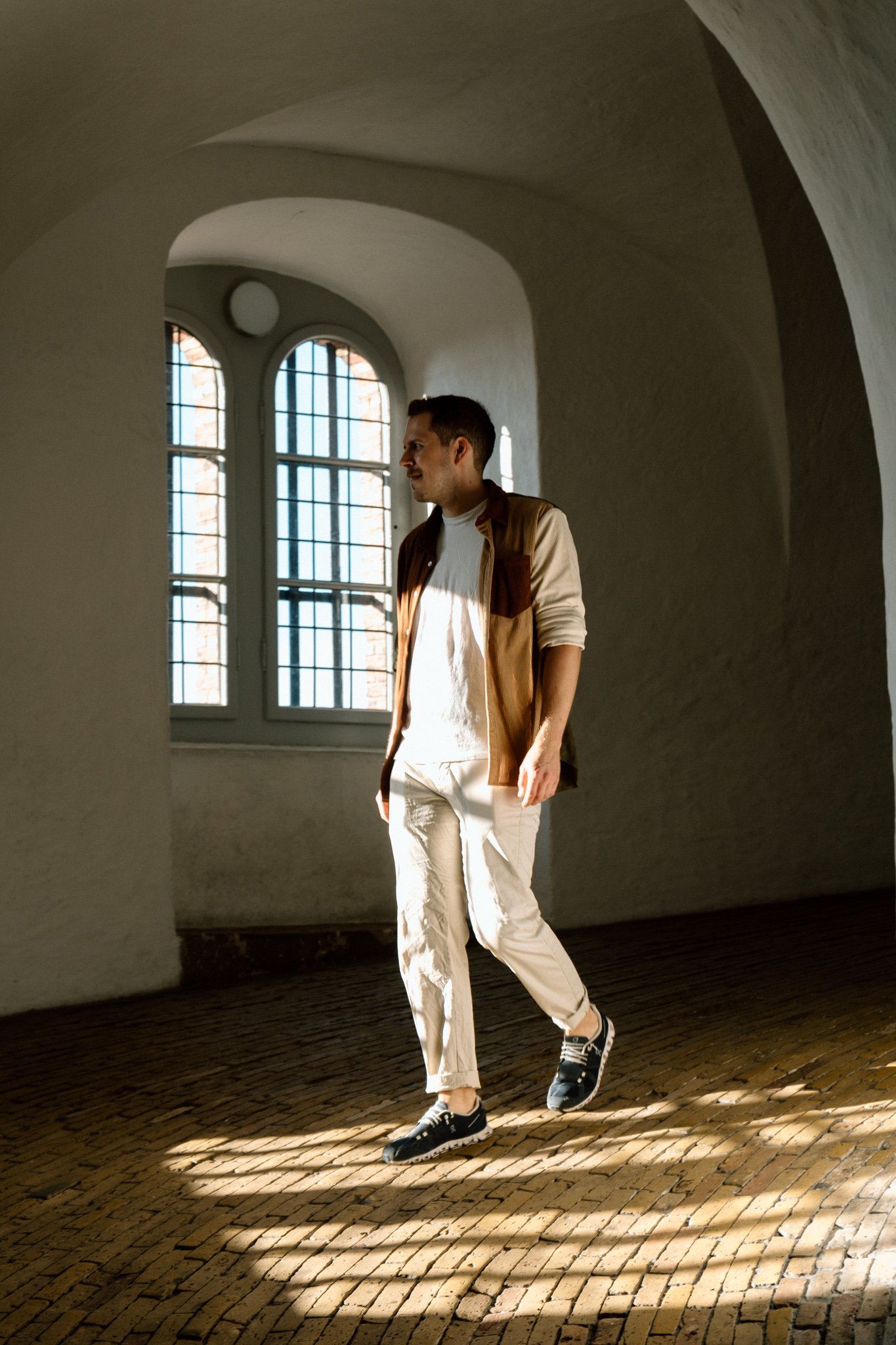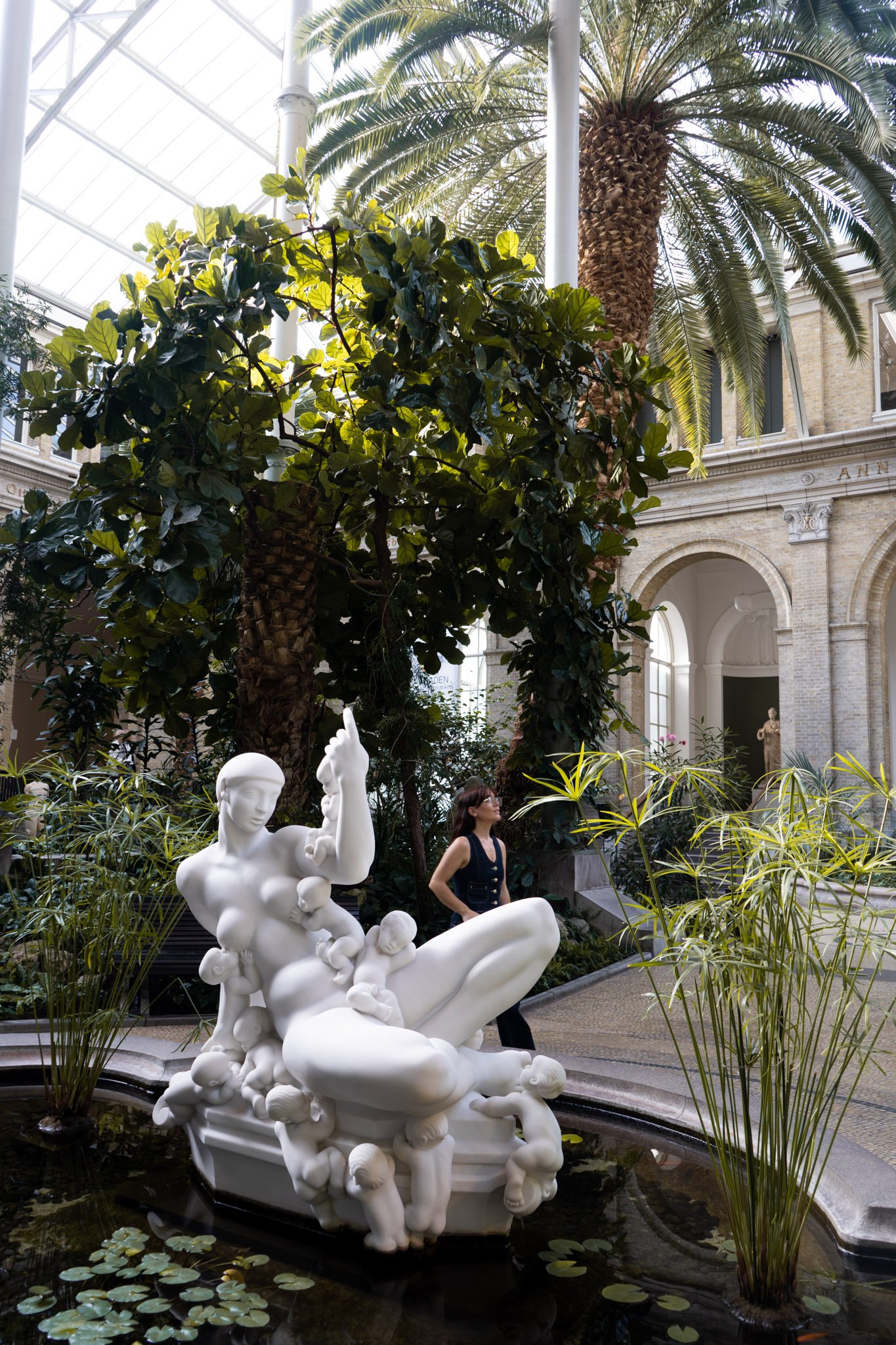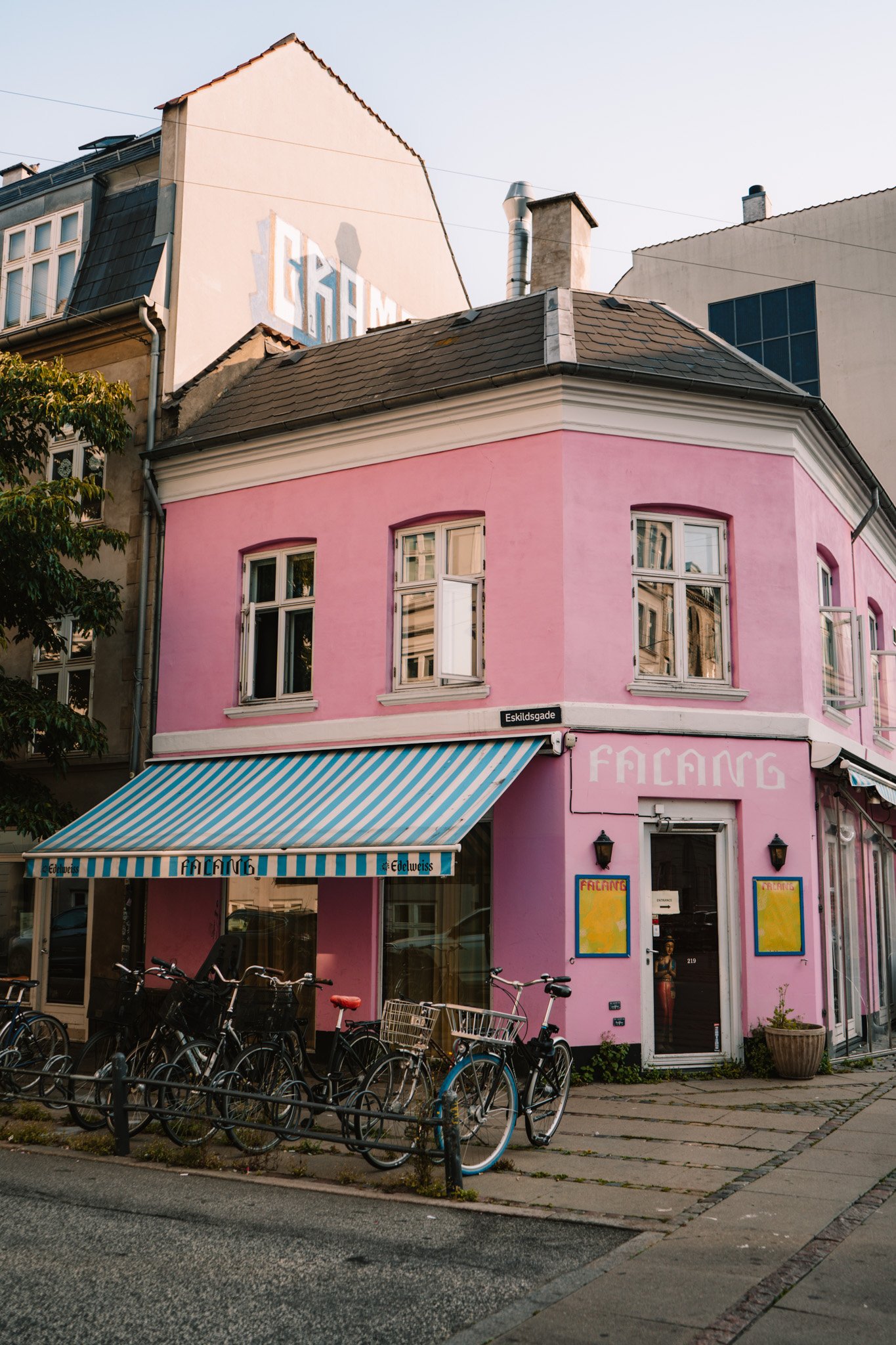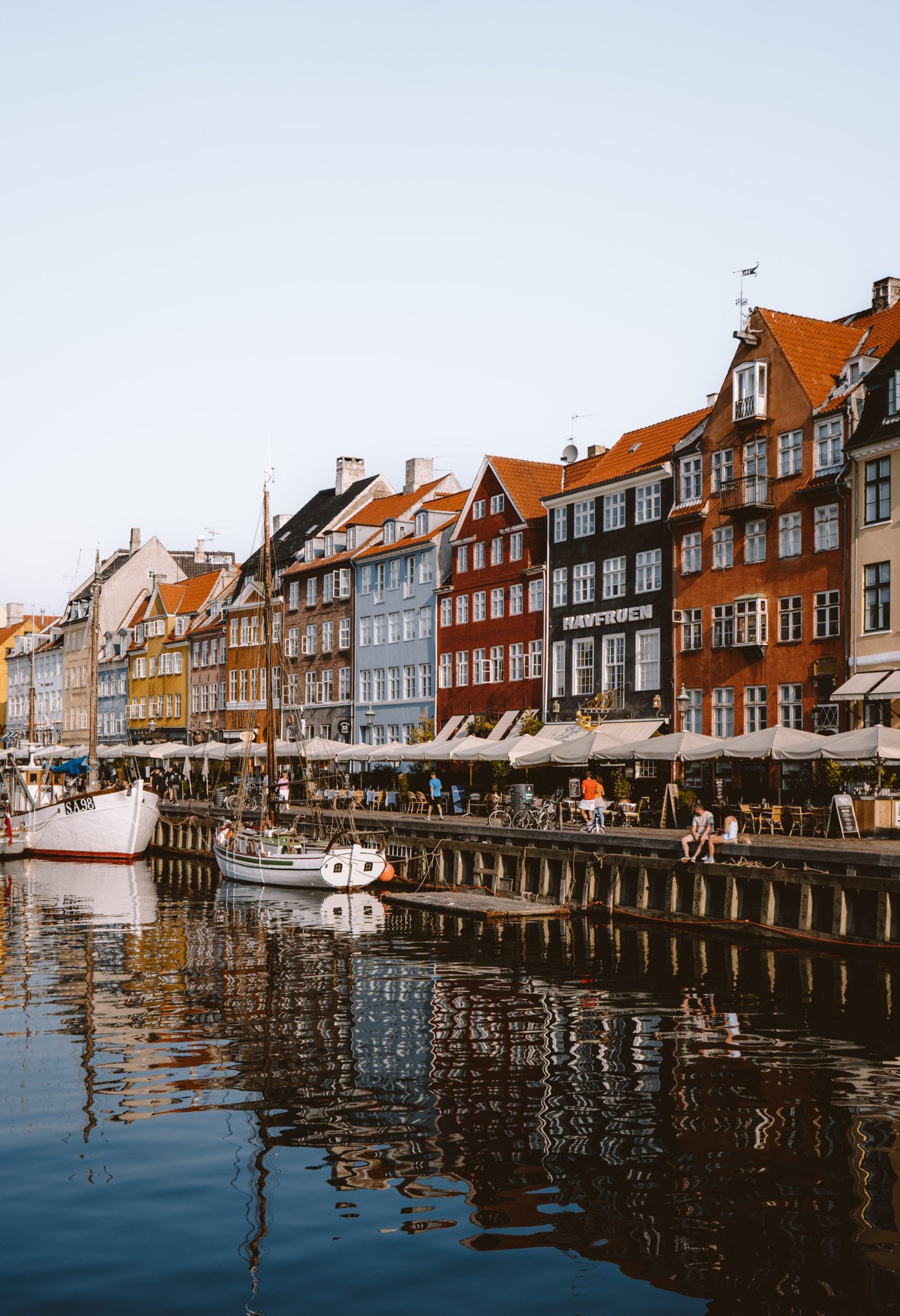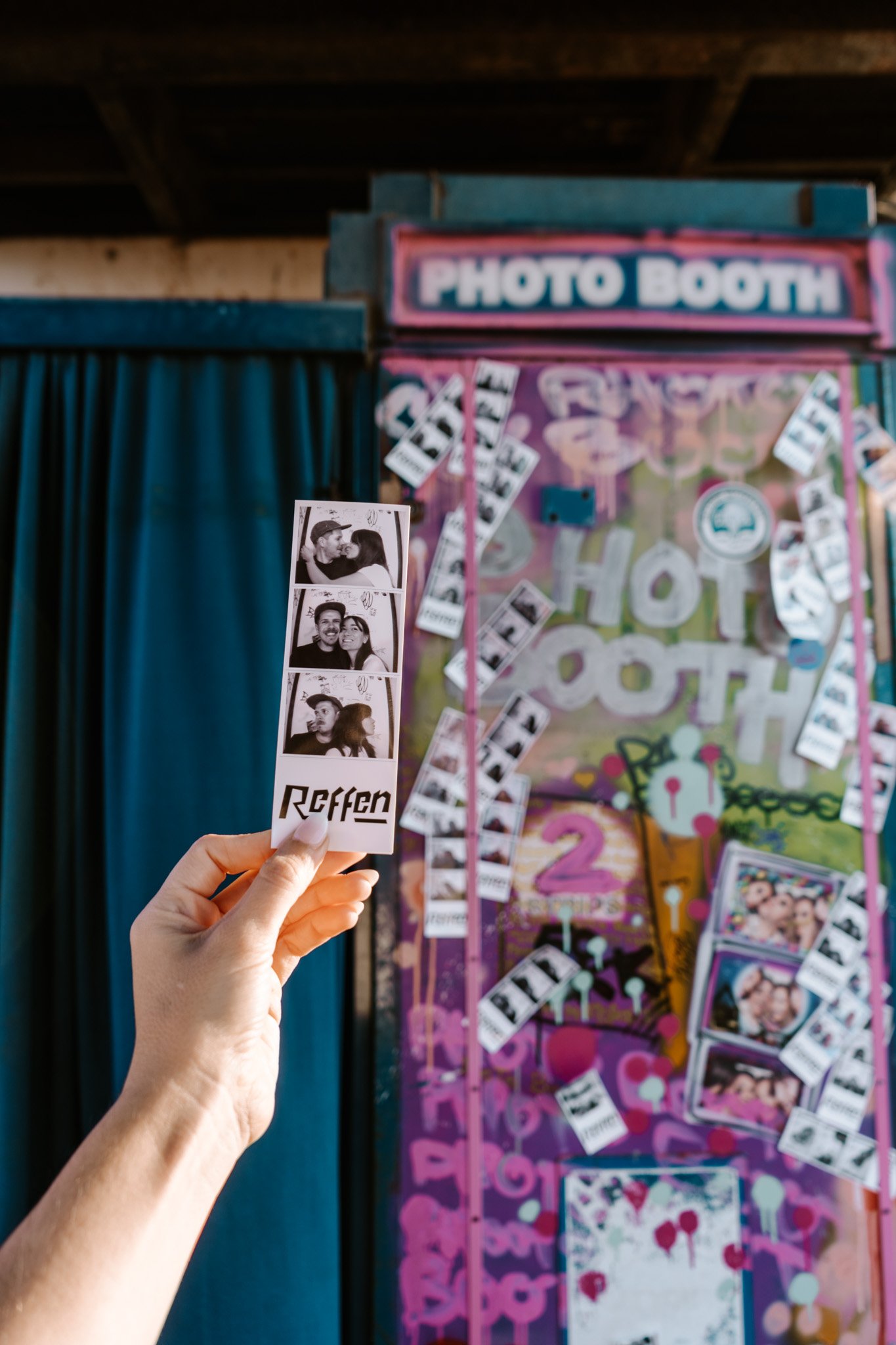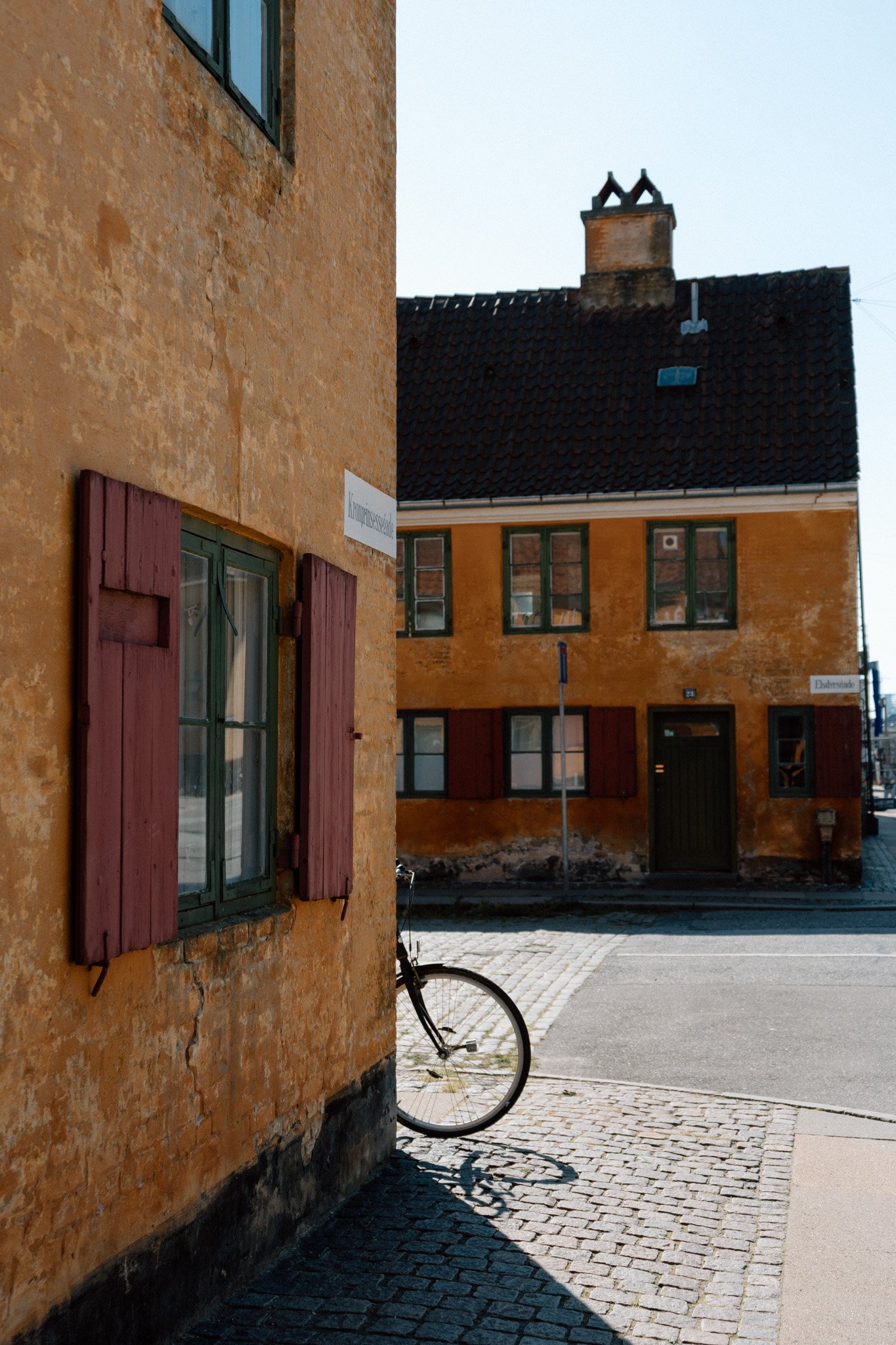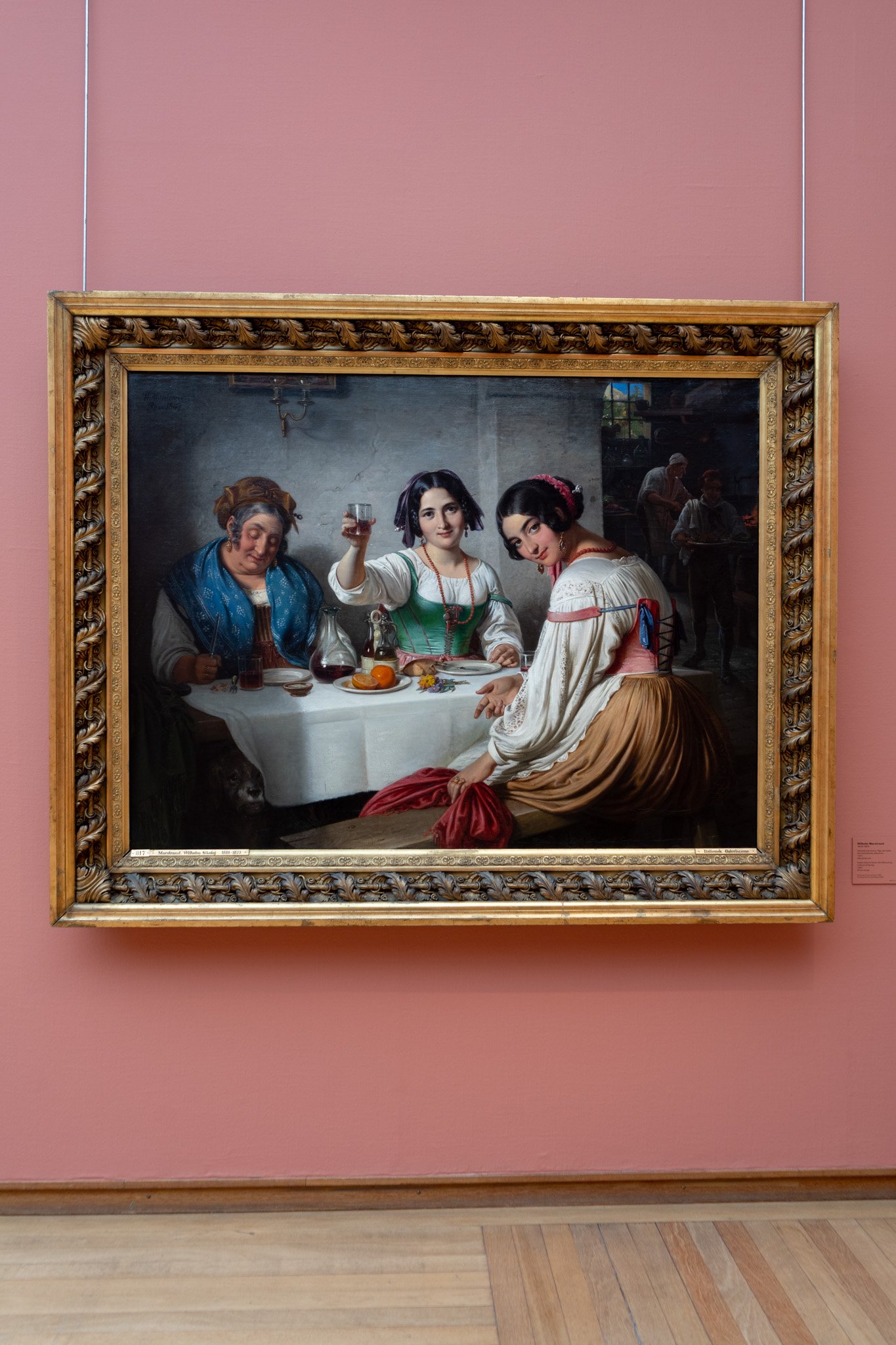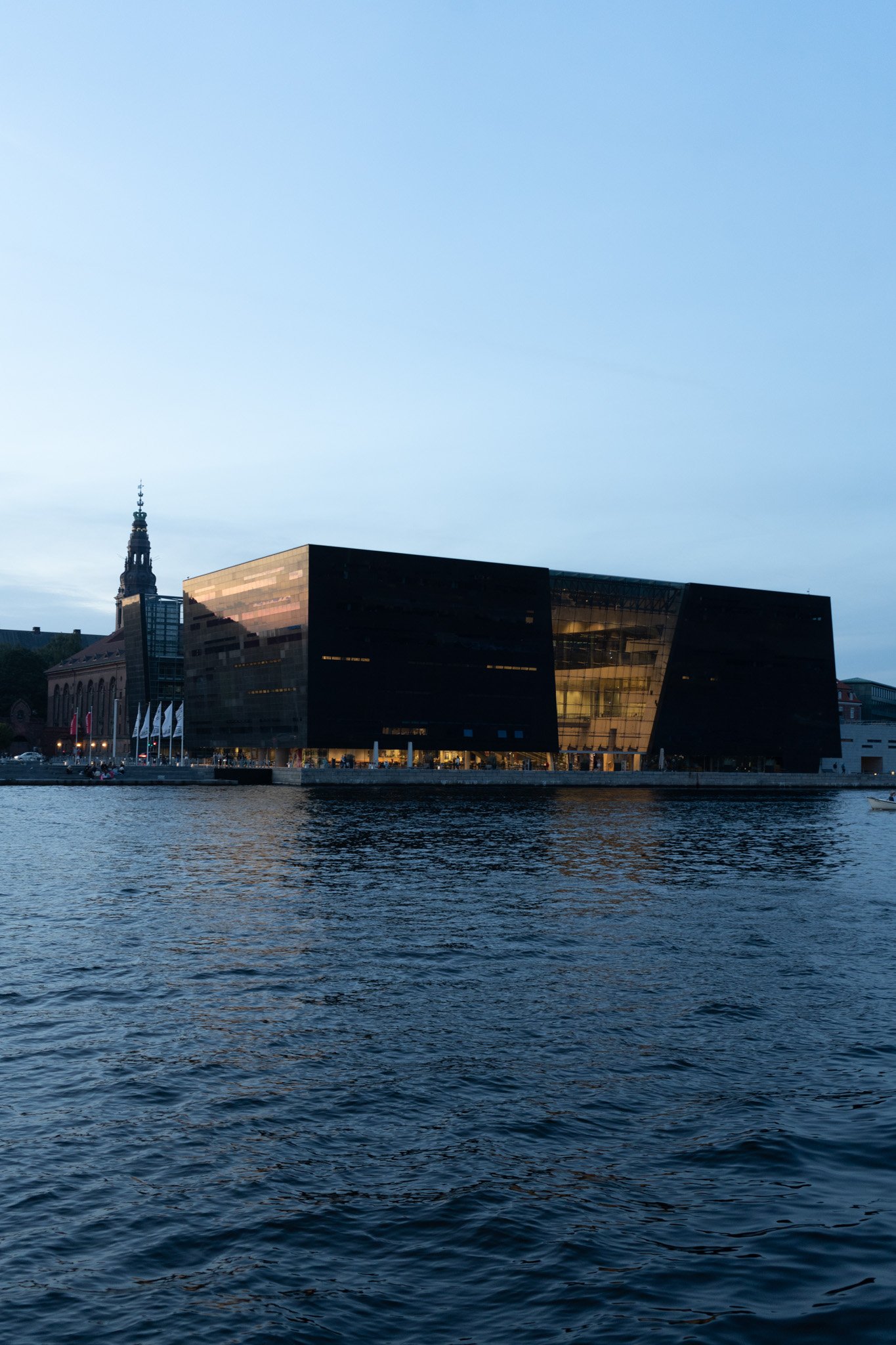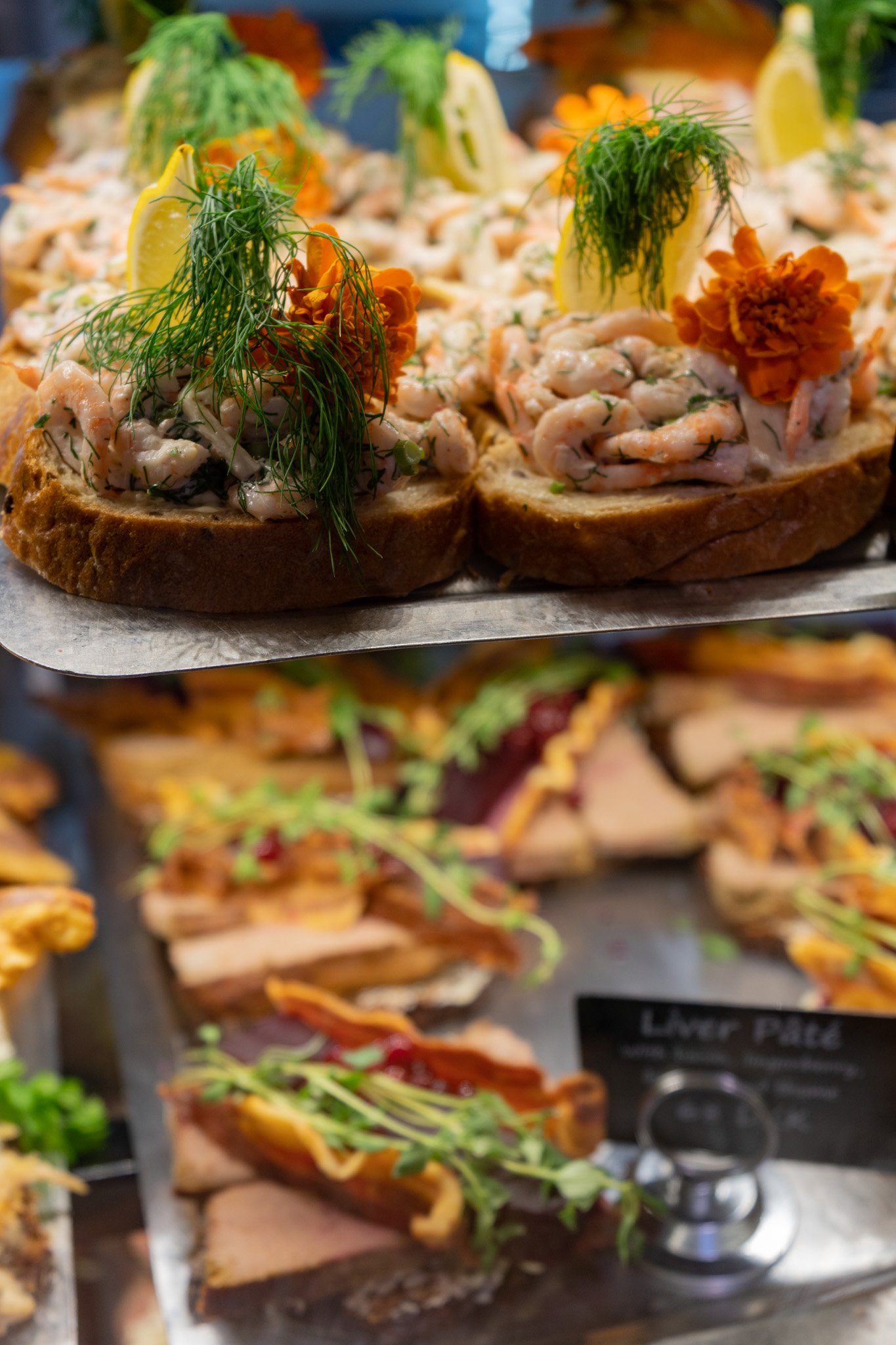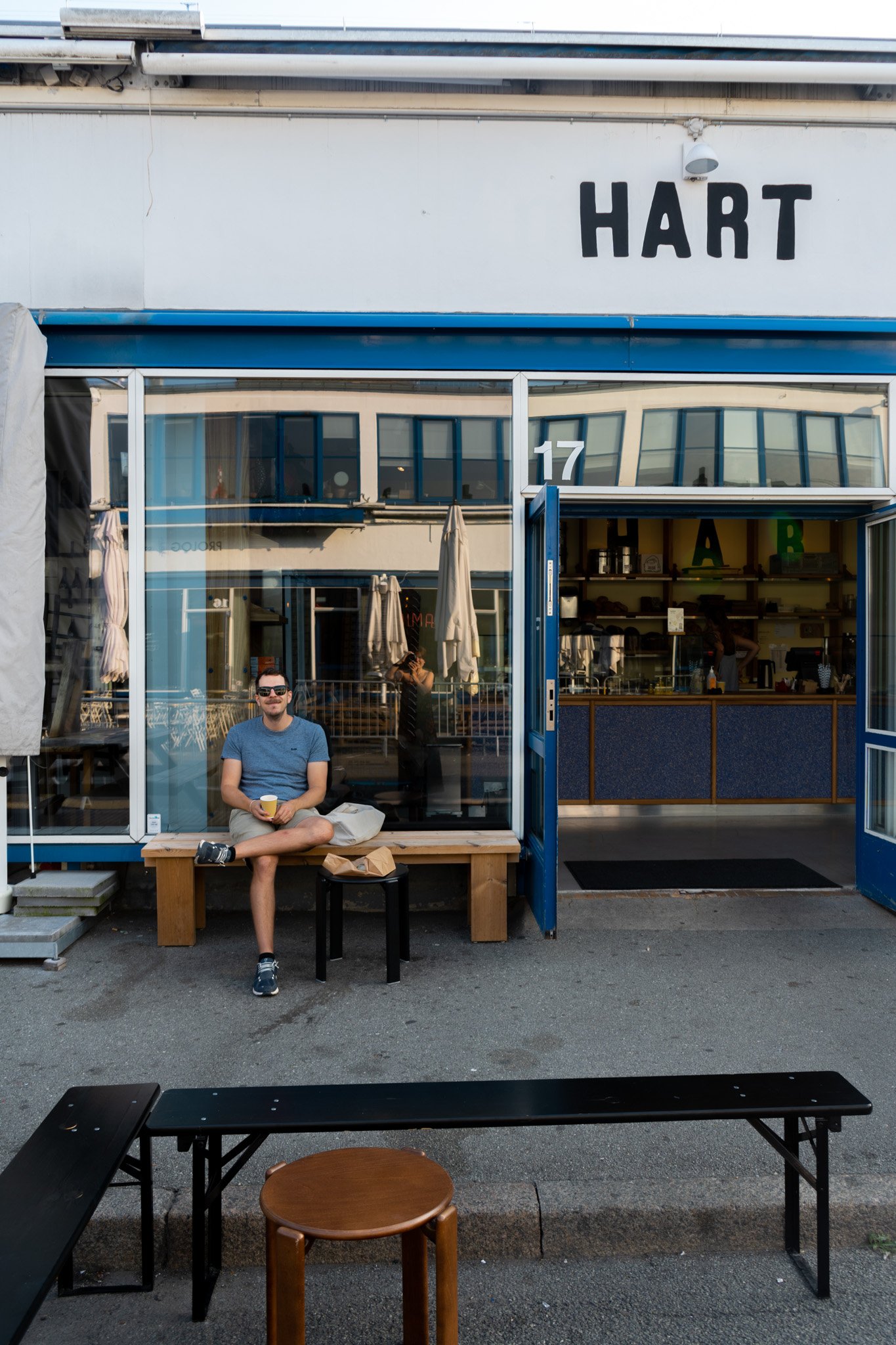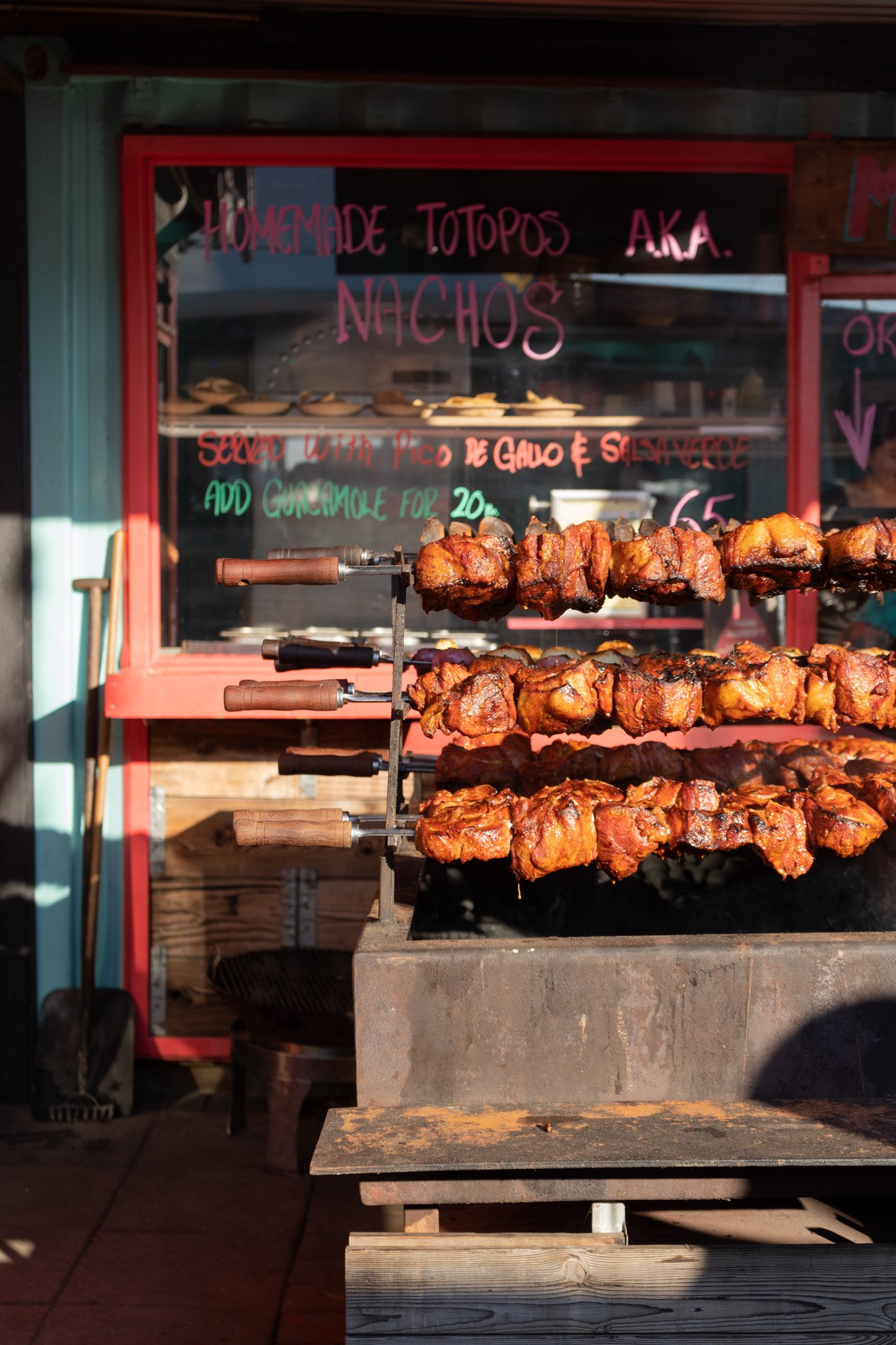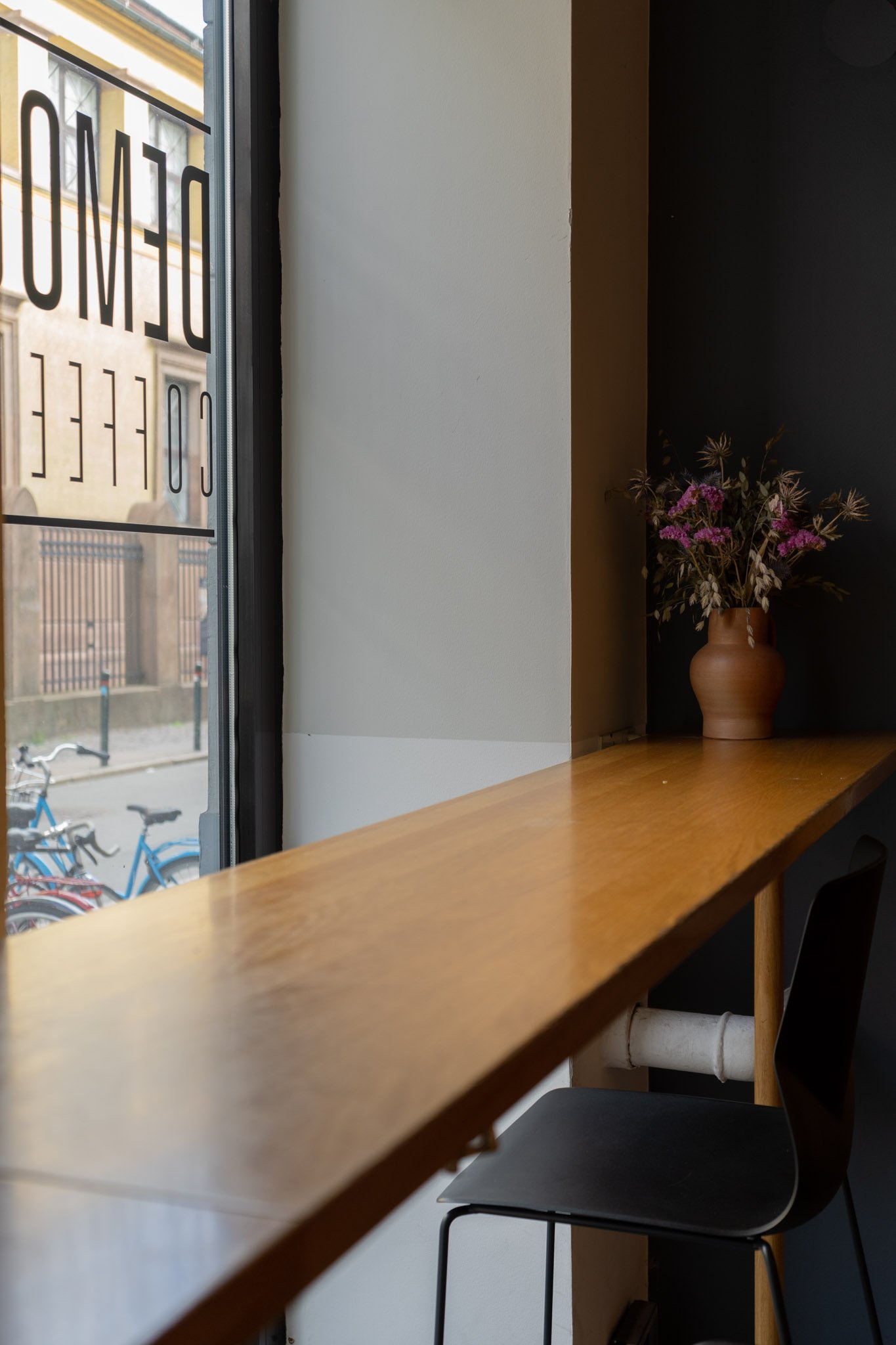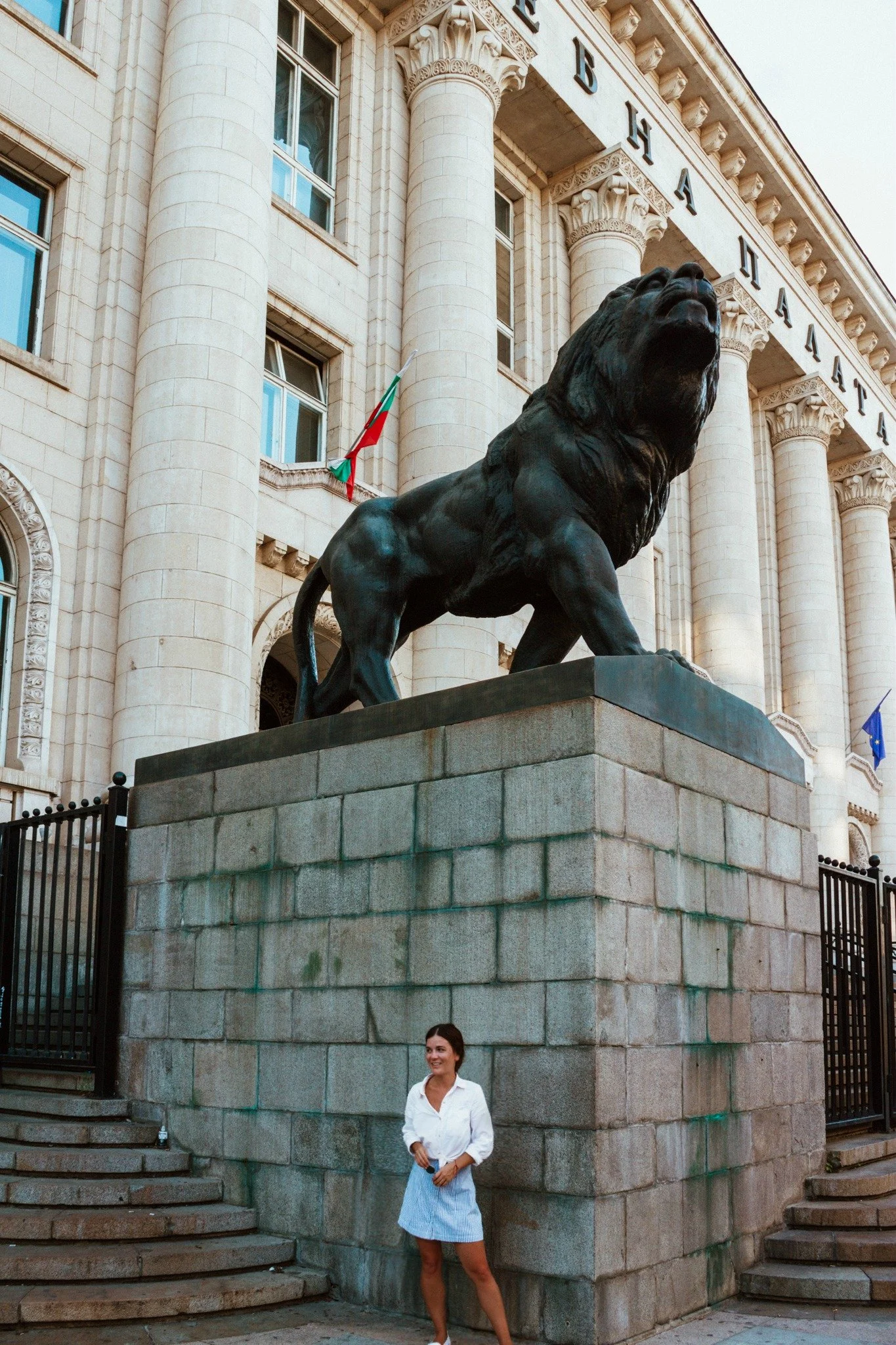3-Day Copenhagen Itinerary
This guide serves as a suggested 3-day itinerary to Copenhagen, including where to stay, what to eat, and all the best things to see and do in the city.
If you’re planning to spend 3 days in Copenhagen, I have created the perfect itinerary for you. I dove head-first into Copenhagen the moment I landed and explored the city from top to bottom.
Copenhagen quickly became one of my favorite cities in Europe. The Danish people have repeatedly been voted some of the happiest in the world— and after exploring Copenhagen in-depth, I can see why. Interesting art, world-class eateries, Scandi-style cafés, and exquisite design spatter the city. Throw in Copenhagen’s history and focus on sustainability, and you have, in my honest opinion, one of the chicest cities in Europe.
This 3-day itinerary encompasses where to stay, what to eat, and all the best things to see and do in Copenhagen. I’ll outline how to spend each of your three days in Copenhagen, including food recommendations and suggestions for how to get around so that you can make the most of your visit.
brief Copenhagen history ↴
One of my favorite things about travel in Copenhagen (and Europe at large) is all the history. The earliest records of Copenhagen as a settlement are from the 10th century. It’s one of the oldest cities in Scandinavia and was a significant port for sea merchants and fishermen. Herring fishing, in particular, made Copenhagen a wealthy settlement that slowly grew into the capital city it is today.
After the city suffered massive fires that destroyed Christiansborg Palace and most of the city center, Copenhagen experienced a period of creative flourishing. Like a phoenix, the city rose from the (literal) ashes and saw its art scene thrive in what is referred to as The Danish Golden Age (1800-1850). Significant figures in literature, music, and architecture emerged during this period, including Hans Christian Andersen, the author of "The Emperor's New Clothes", "The Little Mermaid", "The Princess and the Pea", and "Thumbelina" to name just a few.
Today, Copenhagen has earned a reputation for its excellent interior design, remarkable urban planning, and abundant fine dining options. It is considered the cultural and economic center of Denmark and is regarded as one of Northern Europe’s major financial hubs.
when to visit Copenhagen ↴
Ultimately, the best time to visit Copenhagen depends on your preferences. If you prefer warm weather and don't mind crowds, summer is a great choice. If you want milder weather and fewer tourists, consider spring or early autumn. Winter can be delightful for those who appreciate holiday traditions and a cozy atmosphere. Regardless of the season, Copenhagen offers a vibrant cultural scene, excellent cuisine, and a wealth of attractions to explore year-round.
Spring (April to May) + Autumn (September to October) | Spring and early autumn offer pleasant weather with milder temperatures, typically ranging from 10-15°C (50-59°F). Spring brings beautiful blooming gardens, while autumn offers colorful foliage in parks like the King's Garden and Frederiksberg Gardens. These seasons are less crowded than summer, making it easier to explore popular attractions and dine in restaurants without long waits.
Summer (June to August)| Summer is the peak tourist season in Copenhagen. The weather is generally mild, with average highs around 20-25°C (68-77°F), and longer daylight hours. This is the ideal time for outdoor activities, such as exploring parks and gardens, biking around the city, and enjoying the city's many waterfront areas. Be prepared for larger crowds and higher prices during this period, especially in July when many Europeans take their summer vacations.
Winter (November to March)| Copenhagen winters are cold! Temperatures range from 0°C to 5°C (32-41°F). Snowfall is possible. The city transforms into a cozy winter wonderland with Christmas markets, ice skating rinks, and warm, inviting cafes. If you enjoy festive holiday atmospheres, winter can be a charming time to visit. Just be prepared for shorter daylight hours!
how many days to spend in Copenhagen ↴
Equipped with an efficient itinerary (like this one 😉), you can make the most of 3 days in Copenhagen. However, the city is more widespread than you might think, and you could easily fill 4 or 5 days in Copenhagen if you had the extra time. Three days is enough time for an introduction to the city’s main attractions, its quirky hidden gems, and its scrumptious food scene. An additional day is great for a day trip to one of its neighboring castles or over to Malmö, Sweden.
is Copenhagen expensive ↴
Europe, in general, can be rather expensive, and the entire Scandinavian region has a reputation for being pricey. Copenhagen definitely isn’t cheap, but there are budget-friendly activities, accommodations, and food halls.
Average Copenhagen prices in 2023:
Coffee – $5 / 35 DKK
Single dish at a food market – $11/ 80 DKK
Casual sit-down meal – $25 per person/ 180 DKK
Pint of beer - $7/ 48 DKK
Tips for saving money in Copenhagen:
eat at food markets like Reffen Street Food Market, Tivoli Food Hall, or instead of a sit-down restaurant
plan your itinerary around museum “free” days— for instance, the Design Museum of Denmark is free on Wednesdays, and Glyptotek is free on the last Wednesday of each month
walking around the city or utilizing public transport instead of spending on taxis
nipping into 7/11 or Netto supermarkets to try traditional baked goods at a fraction of the price (their cinnamon buns might have been the best we had throughout Copenhagen).
is the Copenhagen Discover Card worth it ↴
Copenhagen “Discover” Card offers admission to 80+ attractions throughout the city and includes public transport throughout the city, as well as to and from the airport. You can purchase a Discover card for either 24, 48, 72, 96, or 120 hours.
The Copenhagen Card is simple and convenient. First, download the free Copenhagen Card app on your phone. Once you have the app, you can buy the digital card straight from the app or redeem a Copenhagen Card you purchased online through another site like Klook. When you are ready to explore Copenhagen, activate your Copenhagen Card using the app. It’s important to note that all cards in the same order will be activated at the same time. It’s also important to activate your card only when you are ready to start using it since the cards are timed. Once it’s activated, you’ll scan a barcode on the app for entry to attractions and for use on public transport.
The price of a Copenhagen card starts from $68 for one adult, for 24 hours. The final price depends on how long you intend to spend in the city. If you plan on visiting museums or using public transportation, you will absolutely save money by purchasing a Copenhagen Discover Card. The card also unlocks a number of discounts at certain restaurants and eateries. Overall, the Copenhagen Discover Card is 100% worth it, particularly for budget travelers.
where to stay in Copenhagen ↴
There is plenty of accommodation for travelers, including budget-friendly hostels, boutique hotels, and aesthetic Airbnbs.
I stayed at the 25 Hours Hotel, located around the corner from the Round Tower and a short walk from Rosenborg Castle. The rooms are all uniquely designed with retro elements to evoke a sense of nostalgia.
best budget hostels in Copenhagen
best hotels in Copenhagen
We love using Booking.com to book the best places to stay around the world.
how to get to Copenhagen ↴
Most international travelers will arrive in Copenhagen via the airport. Getting from Copenhagen Airport (Copenhagen Kastrup Airport, IATA: CPH) to the city center or other parts of Copenhagen is relatively easy, thanks to a number of public transportation options.
I took advantage of the train from Copenhagen Airport to Copenhagen Central Station. The train is the fastest and most convenient and fastest way to get to the city. The train runs every 10-15 minutes, and it takes roughly 15 minutes to arrive at Copenhagen Central Station. You can purchase tickets at the airport train station using a contactless payment method. Tickets can also be bought in advance online.
You can also get into the city from the airport via the metro. Line M2 connects the airport to various parts of the city. You can purchase a timed ticket from inside the airport terminal. It can be nearly as quick as the train, depending on your destination within the city.
Alternatively, you can use the bus. Bus stops are outside Terminal 2 and Terminal 3, with routes connecting different parts of Copenhagen and its suburbs. The buses tend to run a bit slower from the airport. If you’re short on time, I’d opt for the train.
Some hotels offer guests shuttle services to and from the airport. I suggest checking with your hotel prior to landing.
how to get around Copenhagen ↴
Getting around Copenhagen is a breeze thanks to the city's efficient transportation infrastructure. Copenhagen is highly walkable, though the most popular mode of transport among locals is cycling. Copenhagen is renowned for its extensive network of bike lanes, making it a cyclist's paradise. You can easily rent a bicycle from various providers scattered throughout the city. Exploring Copenhagen on two wheels allows you to soak in the city's beautiful architecture, parks, and waterfronts at a leisurely pace. Many major attractions, such as Tivoli Gardens, the Little Mermaid statue, and Nyhavn, are within easy biking distance, and it's an environmentally friendly way to traverse the city.
I enjoyed making use of Copenhagen’s public transportation systems. The metro is particularly efficient, connecting key areas of the city, including the airport, with frequent and reliable service.
The buses cover a more extensive network than the city’s metro lines. I utilized buses to get to destinations a bit farther from central Copenhagen, like Reffen Street Food Market.
suggested 3-4 day itinerary Copenhagen ↴
day 1: Free walking tour, Amalienborg Palace, Frederik’s Church, Nyhavn Harbor + Canal tours, Round Tower, dinner at Væskt
Hit the ground running on day 1 with a free walking tour of the city. Free walking tours are popular throughout Europe and are a budget-friendly way to see the city and gain cultural context. After your walking tour of Copenhagen, head to Amalienborg Palace.
Not far from Amalienborg Palace is Frederik’s Church, also known as "The Marble Church" (Marmorkirken in Danish). This neoclassical marvel is renowned for its ornate dome and is free to visit. Walk 10 minutes from the church to Nyhavn Harbor. The colorful buildings lining the water are emblematic of Copenhagen, and a must-see for tourists. It is also the boarding point of most of Copenhagen’s city canal tours, your next itinerary stop! The canal tours are a great way to gain cultural and historical context.
Once you’ve returned to land, walk up the sloping Round Tower for panoramic views at golden hour. Finally, cap off your introductory day in the Danish capital with dinner at Væskt. Be sure to make a reservation in advance!
day 2: Brunch + vintage shopping in Nørrebro, Magstræde Street, lunch at Torvehallerne Market, Rosenborg Castle, Carlsberg Brewery, Dinner in the Meatpacking District
Take the city’s public transportation (metro or bus) to Nørrebro, one of the hippest and most multicultural neighborhoods in Copenhagen. Enjoy a leisurely brunch and indulge in the area’s vintage shops. Once your wallet has had enough, head to Magstræde Street. This road’s many colorful buildings are the product of centuries of history. In fact, Magstræde Street is one of the oldest in Copenhagen. It’s perfect for a photo op and a stroll. While you’re in this area, I recommend stopping by Atelier September for a coffee!
Next, take the metro to Torvehallerne Market for lunch. This covered urban market houses local produce, natural wines, and an assortment of gourmet foods. We found pizzas, sandwiches, traditional smørrebrød, and pastries throughout the marketplace at affordable prices. Just a short walk down the road is Rosenborg Castle. Entry to Rosenborg Castle includes admission to the royal treasury where the Danish crown jewels are exhibited.
End your day with a tour of the Carlsberg Brewery and dinner in the Meatpacking District, known for its incredible eateries.
day 3: Andersen Bakery, Danish Architecture Center, Glyptotek, lunch at Tivoli Food Hall, Freetown Christiana, Copenhill, + dinner at Reffen Street Food Market
Start day 3 with breakfast at Andersen Bakery, a Japanese and Scandinavian bakery with pillowy pastries and exquisite coffee. From here, walk to the Danish Architecture Center (DAC). DAC offers a captivating look at Denmark's rich architectural history and contemporary design innovations. You can easily spend a few hours walking around the center’s exhibits.
Next, walk or take a city bus to Glyptotek (aka Ny Carlsberg Glyptotek). Glyptotek is a museum housing over 10,000 works of art, including a gorgeous entryway covered in greenery. If you have a large bag, you’ll be asked to store it in a secure locker in the museum basement. You’ll work up an appetite wandering through the art-filled corridors of the Glyptotek, but luckily your lunch stop is a short 10-minute walk away.
Stroll to Tivoli Food Hall to grab a bite to eat. Tivoli Food Hall is bursting with food from all over the world. Here, you’ll find traditional Danish cuisine, as well as international fare. Card is widely accepted here, but the place gets very busy on the weekends so you might have a hard time finding a seat on a Saturday.
After eating your fill, head to Freetown Christiana to admire the free state’s graffiti and squatted buildings. Be sure not to take any photos past the entry sign, or you’ll be kindly asked to put your camera away by residents. Continue north to Copenhill via bus. Copenhill is actually a waste treatment center, but its modern design will “wow” you.
Cap off your third day in Copenhagen with dinner at Reffen, a street food market built on the water out of shipping containers. From Nepali food to Cajun cuisine, Reffen has it all and a lively atmosphere to boot. Here, you’ll see locals docking up their boats, sunbathing with an Aperol Spritz in hand, and generally enjoying the ambiance.
Day 4 (optional): Day trip to Krongborg Castle, Frederiksberg Castle, or Malmö, Sweden
If you have an extra day, add a day trip to your itinerary! I recommend taking the train over to Malmö, Sweden, or discovering nearby Danish castles.
best things to do + see in Copenhagen ↴
Nørrebro
My favorite neighborhood in Copenhagen is Nørrebro. It’s one of the city’s most diverse neighborhoods and has a reputation for being trendy. In recent years, Nørrebro has transformed into one of the most coveted neighborhoods to live in.
This area has become synonymous with multiculturalism and art. Nørrebro is densely populated with immigrants, which means it is buzzing with international eateries, vintage shopping, and café culture. We ate a light at Andersen and Maillard, a Danish bakery, right across the road from a Vietnamese restaurant and down the street from a tailor specializing in East African garments.
ADMISSION | free
Rosenborg Castle
Rosenborg Castle is a testament to Denmark's rich royal heritage. King Christian IV commissioned the castle in the early 17th century. It was originally intended as a royal summer residence and hunting lodge for the Danish royal family.
Its Dutch Renaissance architecture is characterized by its red-brick facade, copper-green spires, and intricate ornamentation. The castle's design showcases the grandeur of the era. It stands tall, surrounded by meticulously manicured gardens in a symmetrical layout with decorative embellishments that reflect the tastes of the Danish monarchy during the time. We spent hours walking through room after room brimming with impressive art, floor-to-ceiling tapestries, and royal artifacts.
Today, Rosenborg Castle has evolved into a treasury vault for the crown jewels, including the Danish crown, scepter, and orb, which are all displayed in a secure chamber.
ADMISSION | 120 DKK
Danish Architecture Center
Established in 1985, the Danish Architectural Center (DAC) encapsulates the country’s architectural journey and design history. DAC has evolved into a dynamic cultural institution dedicated to promoting architecture and urban development. Housed in a striking modernist building along the city's waterfront, DAC is a testament to Danish design prowess in and of itself.
The center is filled with exhibitions that provide fascinating insights into the evolution of Danish architecture, showcasing iconic structures such as the Sydney Opera House, which was designed by the renowned Danish architect Jørn Utzon. The most interesting exhibits, in my opinion, were those regarding Copenhagen’s urban planning strategies and sustainability practices. The center is highly interactive and often holds events, including guest lectures and workshops. You can easily spend a few hours here, especially if you have an interest in design!
ADMISSION | 115 DKK
Frederik’s Church
I’m not usually impressed by churches, however, the frescoed interiors of Frederik’s Church are a thing to marvel at. Construction for Frederik's Church, also known as "The Marble Church" (Marmorkirken in Danish), began in 1749. Unfortunately, construction was interrupted for several decades due to financial constraints. In the mid-19th century, the church was finally complete. The defining feature of Frederik's Church is its massive copper-clad dome, which ranks among the largest church domes in Scandinavia. Today, Frederik's Church stands as both a place of worship and a popular tourist attraction.
ADMISSION | free
SMK National Gallery of Denmark
SMK is Denmark’s largest art gallery. The exhibits feature impressive collections of Danish and international artists spanning seven centuries. It is widely regarded as the best art museum in Denmark— and that is saying something, as there are MANY! SMK is renowned for its Danish Golden Age works and houses one of the world’s largest Matisse collections.
ADMISSION | 120 DKK
Round Tower - Rundetårn
The Round Tower (Rundetårn in Danish) is an architectural icon. The tower was built in the 17th century by King Christian IV with the dual purpose of being an observatory and a library. Tourists can climb the tower for panoramic views of Copenhagen from above, but it’s a long slog. The tower lacks a traditional staircase. Instead, a gently sloping spiral ramp winds 209 meters all the way to the top. This was to allow horses and carts to transport books to the library—a feature that distinguishes it from other European towers.
The Round Tower also houses an exhibition space, displaying historical artifacts and providing insight into the tower's intriguing past. As you ascend the tower, keep an eye out for the beautiful baroque library hall, a serene and historic space often used for cultural events and exhibitions.
ADMISSION | 40 DKK
Tivoli Gardens
Nestled in the heart of Copenhagen is a cherished piece of Danish heritage— Tivoli Gardens. Established in 1843, Tivoli is the second-oldest amusement park in the world. Its founder, Georg Carstensen, was inspired by the magic of the gardens in Paris and wanted to create a space in Copenhagen where people could escape the noise of city life and indulge in a world of play. Since its inception, Tivoli has been a beloved destination for locals and tourists alike.
Throughout its existence, Tivoli Gardens has been a hub for artistic performances, hosting renowned musicians, ballets, and theater productions. It's said that Hans Christian Andersen even found inspiration for some of his famous tales while strolling through the park's fairy tale gardens. The iconic wooden roller coaster, Rutschebanen, has been Tivoli’s centerpiece since its early days.
You can beat the queues and buy your tickets online here.
ADMISSION | 135 DKK, 145 DKK on weekends
The Little Mermaid
The Little Mermaid, or Den Lille Havfrue, is generally associated with Copenhagen by most people. While I wouldn’t consider the bronze sculpture a “must see” for those short on time, it is one of those classic bucket list items for travelers touring the city.
Created in 1913 by Edvard Eriksen, the sculpture depicts a mermaid sitting on a rock looking out at ships in the harbour. The mermaid’s body was sculpted in the image of Eriksen’s wife. The Little Mermaid is typically surrounded by tourists eagerly waiting to snap the perfect picture. It’s also been the subject of increasing vandalism over recent years. Nonetheless, it’s undoubtedly become a landmark of Copenhagen.
If you’re underwhelmed by the Little Mermaid, consider visiting the '“Genetically Modified Mermaid” located near the original mermaid statue. It’s a reimagining that features a contorted figure siurrounded by Adam, Eve, Christ, and a pregnant man. It’s definitely quirky, but I found it a bit more exciting than the original.
Amalienborg Palace
A visit to Amalienborg Palace promises a royal experience that blends history, culture, and architectural beauty. It was constructed in the 18th century during the reign of King Frederick V and comprises four identical rococo-style palaces surrounding an elegant courtyard. Each palace served as the private residence of different members of the Danish royal family. The palace exterior is characterized by its pale yellow facade.
Today, they continue to host various royal functions and ceremonies here. One of the most captivating features of Amalienborg is the daily Changing of the Guard ceremony, which takes place in the courtyard and offers a glimpse into Danish royal traditions. You can witness the changing of the guard every day at noon.
Additionally, you can explore the museum at Amalienborg, which offers insight into the lives of Denmark's monarchs, their history, and the palace itself. The cost of admission varies depending on the season and the specific palaces within the complex you wish to visit. However, admission price typically ranges from 100 to 160 DKK per adult.
ADMISSION | starting from 100 DKK
Freetown Christiania
Freetown Christiania is a unique and somewhat controversial neighborhood with a storied history. Founded in 1971, Christiania emerged as a self-declared autonomous community when a group of squatters occupied a former military barracks and decided to create a social experiment based on communal living and artistic expression. The area was initially a symbol of counterculture and resistance to traditional societal norms, leading to clashes with Danish authorities over the years. However, it eventually gained semi-legal status in 2011, and today it remains a fascinating and vibrant part of Copenhagen.
Travelers who visit Freetown Christiania can expect a truly eclectic experience. The neighborhood is known for its colorful, graffiti-adorned buildings. As you wander through the area, you'll encounter an array of quirky shops, cozy cafés, and art galleries showcasing the works of local artists. One of the most iconic areas within Christiania is Pusher Street, where a longstanding open-air cannabis market operates despite its legal gray area. While cannabis sales are tolerated within Christiania, it's important to note that Danish law still considers it illegal, and it's advisable to exercise caution and respect the rules of the community.
ADMISSION | free
Christiansborg Palace
Christiansborg Palace, perched on the tiny island of Slotsholmen, has been at the center of Danish political and royal life for centuries. Its storied past dates back to the 12th century when it was originally a medieval fortress. However, the current neoclassical palace we see today was built in the early 20th century after a series of fires had destroyed its predecessors.
Christianborg’s neoclassical elegance, Corinthian columns, and many marble statues pay homage to Danish history and culture. The palace interiors are the epitome of opulence. I was in awe of the well-preserved frescoes, ornate chandeliers, and marble accents. One of the most iconic features is the tower, which offers a panoramic view of Copenhagen and its surrounding waters.
Beat the queues and buy your tickets online here.
ADMISSION | 160 DKK
Carlsberg Brewery
If you love a cold one, make sure not to miss the Carlsberg Brewery. The brewery is located in Vesterbro, near the Meatpacking District. You’ll know you’ve arrived thanks to the iconic elephant statues standing at either side of the entrance gates. The brewery complex includes a small museum, a beer laboratory, and, of course, the brewery. While it definitely gives insight into the beer-making process and the history of beer in Denmark, I wouldn’t consider it one of Copenhagen’s most well-done museums.
Unfortunately, during my August 2023 visit, the brewery was closed and under construction. It is set to reopen in December 2023.
Copenhagen Botanical Garden
Copenhagen’s Botanical Garden is a can’t-miss for any first-time visitor! Since it’s located just steps from Rosenborg Castle, this is a great addition to your itinerary after you visit the castle grounds. The gardens opened in 1870 and are home to over 13,000 plant species. The highlight of a visit to the Botanical Garden is the Victorian-era Palm House, which makes for a stunning photo opportunity.
ADMISSION | free, 60 DKK for entry to the Palm House
Louisiana Museum of Modern Art
I know that art, especially modern art isn’t everyone’s cup of tea. However, I’d argue The Lousiana Museum of Modern Art (LMOMA) is one of the most interesting art museums I’ve been to. LMOMA houses over 4,000 works, including Picasso masterpieces. The museum overlooks Sweden and the coast.
ADMISSION| 145 DKK
Church of Our Saviour
While you’re near Christiana Freetown, make a pit stop at The Church of our Saviour. This Baroque-style church is known for its external winding staircase, which tourists can climb up for panoramic views of the city. When we visited, it was much less crowded than the Round Tower and, if I’m honest, the views were better.
Islands Brygge Harbor Bath
Harbor baths are ingrained in the culture of Denmark, and Islands Brygge has become one of Copenhagen’s most iconic swimming spots. The city skyline looms as the backdrop of the five pools, varying in depth. Some nights, you’ll find the nearby community center hosting public salsa classes, adding to the overall atmosphere. The Islands Brygge Harbor Bath is the perfect communal space for a summertime swim.
The harbor bath is open from May 1st to March 31st.
ADMISSION | free
rent a boat
Much of Copenhagen's socializing is done on the water. You’ll see people jumping into the still water, swimming and drinking. So, I can think of no better way to spend an evening than by renting a boat to explore the charming canals. Spending golden hour on the water, in. about, enjoying a picnic of Danish baked goods and natural wines— what could be better?
You can rent electric boats, as long as you’re 18 years or older, with no prior experience through highly reputable companies. Rules for rental boats do vary from company to company, so please read your T&Cs carefully. I highly recommend GoBoat! The boat was easy to operate, and everything was straightforward. I’ve also heard fantastic things about FriendShip.
Meatpacking District - Kødbyen
Kødbyen, also known as the Meatpacking District, was originally home to Copenhagen’s meat industry. What was once an industrial, gritty area has transformed into a creative corner of the city and a foodie haven. The Meatpacking District is also renowned for its vibrant nightlife. I visited Prolog Coffee and Hart Bageri in the Meatpacking District, and what I loved most was the vibe of the industrial brick buildings and how they’ve had fresh life breathed into them with new business.
ADMISSION | free
where to eat in Copenhagen ↴
Copenhagen is brimming with Michelin-star eateries, fresh seafood restaurants, and international food markets. If you’d prefer something lighter, like a coffee and a pillowy pastry, consider reading my guide to the best cafés in Copenhagen.
Original Coffee | located at the top of Illum department store in the city center
Lillians Smørrebrød | traditional Danish lunch in a casual dining atmosphere
Væskt |an upscale farm-to-table dining experience close to the Round Tower
Noma** | Michelin-star restaurant renowned for its avant-garde approach to Nordic cuisine, considered one of the best restaurants in the world
Esmée** | a lively restaurant with impeccable interior design that includes lush greenery, thick curtains, and rich marble surfaces
Delphine** | a bright and airy Mediterranean restaurant
42Raw | a fully vegan restaurant t
Sonny |delicious homemade breakfast that locals rave about
GRØD** | Grød the food is traditional Danish porridge, but the restaurant serves an upscale version of the dish
La Neta | affordable Mexican street food
Selma | a modern Scandinavian restaurant with an ever-changing, season-driven menu
**All those marked with asterisks indicate I haven’t had the chance yet to eat there myself
map ↴
Find everything you need for the perfect 3-day itinerary in Copenhagen, Denmark on the map below.
